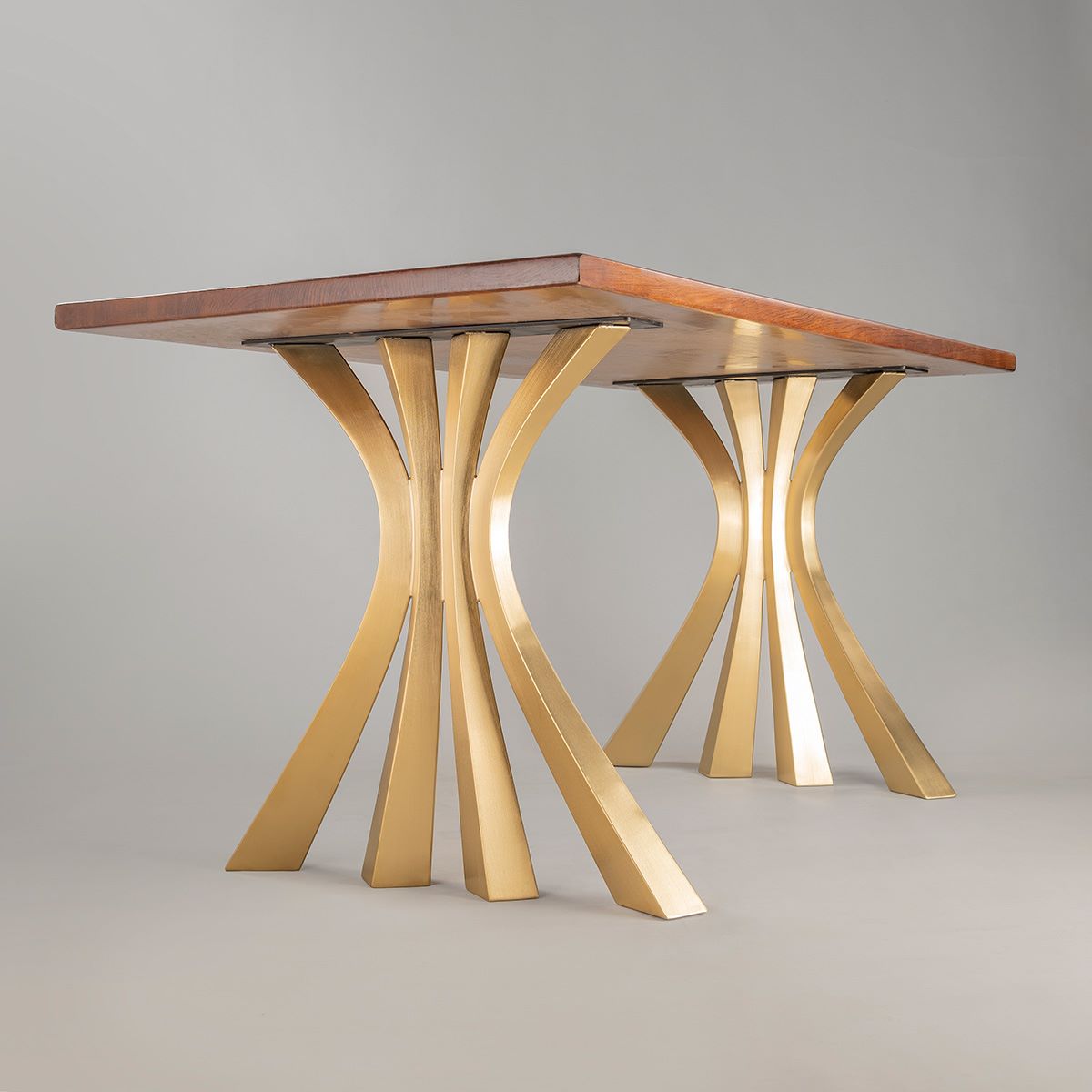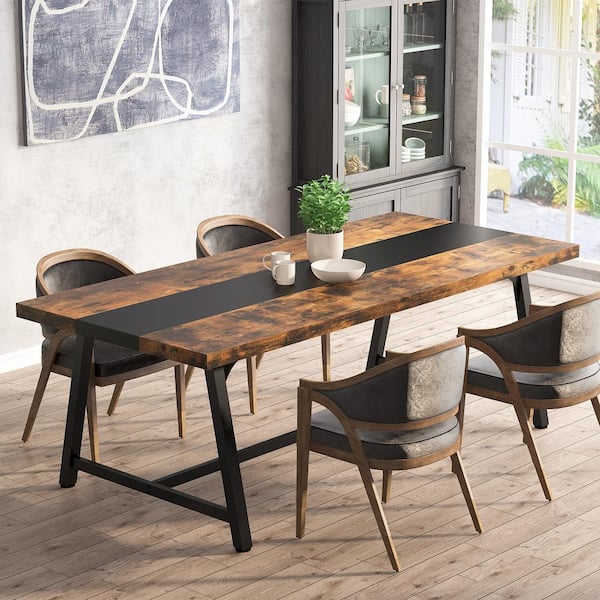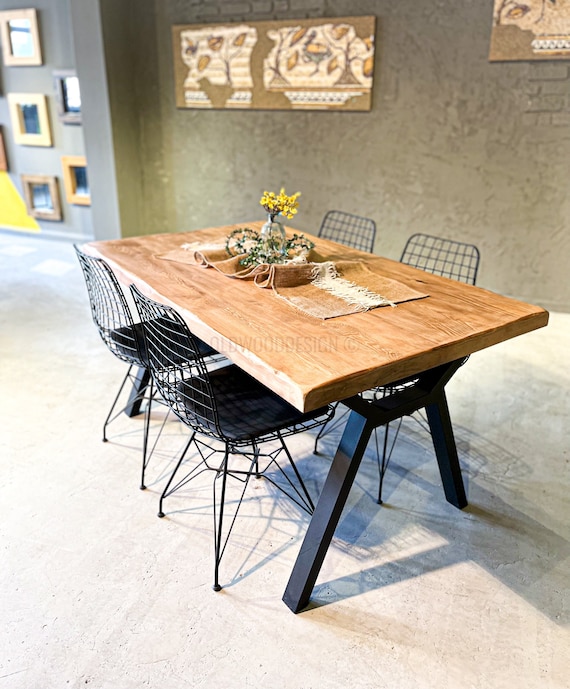Upgrade Your Table's Appearance with Attractive Dining Table Legs Wood Styles
Upgrade Your Table's Appearance with Attractive Dining Table Legs Wood Styles
Blog Article
Discovering the Various Kinds Of Table Legs Wood for Your Eating Area
The selection of eating table legs wood can profoundly affect both the useful and visual qualities of your dining space. Solid wood choices, such as oak and walnut, supply a timeless appearance with unmatched longevity, while engineered timber options use cutting-edge designs that mimic the splendor of all-natural grains.
Strong Timber Options

Unlike crafted products, solid timber is much less vulnerable to warping and damages over time when correctly preserved. Each piece of solid wood is one-of-a-kind, showcasing private characteristics that add to the charm and personality of the eating table.
In addition, solid wood can be finished in countless means, varying from natural oils to discolored surfaces, enabling homeowners to individualize their furnishings to match their decoration. In recap, choosing solid timber for dining table legs not only makes sure architectural integrity but likewise improves the aesthetic allure of the eating area, making it a beneficial financial investment for any kind of home.
Engineered Wood Alternatives

Plywood, constructed from multiple layers of wood veneer, is stable and specifically solid, making it an exceptional selection for eating table legs. Its layered structure permits it to endure adjustments in humidity and temperature far better than standard solid timber. MDF, on the various other hand, offers a smooth surface area for paint or veneering, making it possible for developers to achieve a refined look while keeping architectural integrity.
When choosing crafted wood options, it is important to consider the intended use and preferred visual. These materials not just boost the capability of dining rooms yet likewise allow for greater design adaptability, making sure that modern and standard designs can coexist harmoniously.
Reclaimed Timber Includes
Recovered wood supplies a distinct mix of sustainability and personality, making it a significantly popular selection for dining table legs. Sourced from old barns, manufacturing facilities, and other structures, recovered wood symbolizes a background that brand-new products just can not reproduce. Each item lugs its own tale, noted by distinct flaws, knots, and differing grain patterns, which add to a table's unique aesthetic allure.
In enhancement to its visual appeal, recovered wood is an ecologically pleasant alternative. By repurposing formerly made use of products, it minimizes the demand for brand-new lumber, hence aiding to minimize and preserve forests waste. This lines up with a growing customer preference for lasting methods in furnishings.
Additionally, recovered timber is often more resilient than freshly harvested wood due to its age. The all-natural drying process that redeemed wood undertakes results in a denser and stronger product, making it less prone to warping and splitting. This boosts the longevity of dining tables, allowing them to hold up against the rigors of everyday my site use.
Softwood vs. Hardwood
When choosing eating table legs, comprehending the differences between softwood and wood is important for achieving both practical and visual goals. Softwoods, obtained from coniferous trees, such as pine and cedar, are characterized by their lighter weight and simplicity of adjustment. They usually exhibit a more rustic appearance, making them suitable for informal or country-style dining rooms. However, softwoods are usually less resilient than hardwoods, which can be a consideration for households or those looking for durability in their furnishings.
On the various other hand, woods, sourced from deciduous trees like maple, oak, and cherry, are renowned for their density, stamina, and durability. The intricate grain patterns and abundant colors of woods supply a timeless and innovative allure, making them excellent for formal dining setups. While woods have a tendency to be a lot more costly and heavier, their resilience against damage often warrants the investment.
Eventually, the choice in between softwood and hardwood for eating table legs should align with your layout vision, use requirements, and spending plan, making certain that your dining space reflects your individual design while remaining useful gradually.

Therapies and surfaces
The aesthetic appeal and long life of table legs can be substantially improved through various finishes and treatments. These procedures not just secure Discover More Here the timber from damage but also boost its look, enabling it to match diverse indoor designs.
One common therapy is tarnishing, which permeates the timber and improves its natural grain while including color. Stains provide an abundant, sophisticated look, enabling homeowners to match their furnishings with existing decoration. On the other hand, clear coatings such as polyurethane or varnish produce he has a good point a protective layer without altering the wood's initial tone, making sure longevity versus damage.
Furthermore, natural oils, like tung or linseed oil, nourish the wood and provide a subtle luster, all while being green. These oils enable the surface area to breathe, protecting against dampness build-up and prospective bending.
For those seeking a rustic appeal, distressed or weathered coatings can be used to create an aged look, including character to the item. Ultimately, the selection of finishes and therapies relies on personal choice, desired looks, and the certain timber kind, making it necessary to take into consideration these aspects when selecting dining table legs for your room.
Conclusion
In verdict, the option of dining table leg products considerably affects both the visual and useful elements of an eating area. Solid timbers, crafted alternatives, and reclaimed options each offer distinct benefits, providing to various choices and needs. Understanding the differences between woods and softwoods, along with appropriate coatings and therapies, enables for informed decision-making. Inevitably, the option of wood type must straighten with wanted design, toughness, and environmental factors to consider, enhancing the overall eating experience.
The option of eating table legs wood can greatly affect both the visual and practical high qualities of your eating space - Dining Table Legs Wood. Strong timber options, such as oak and walnut, offer a classic look with unmatched toughness, while engineered wood alternatives supply ingenious designs that resemble the richness of all-natural grains. Solid wood supplies a classic top quality that can boost the total style of an eating area. Each piece of strong timber is unique, showcasing individual characteristics that add to the beauty and character of the eating table
Additionally, recovered wood is typically much more resilient than freshly collected timber due to its age.
Report this page